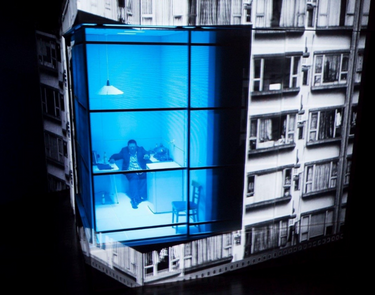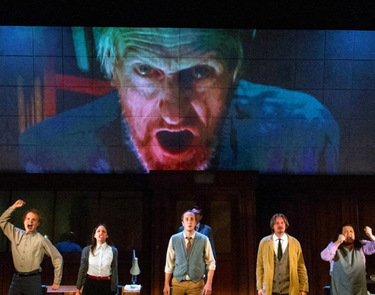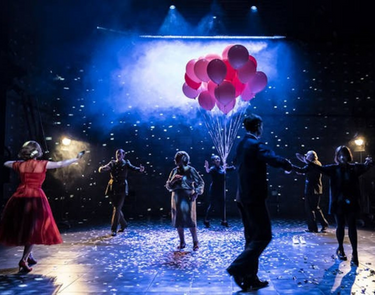The “Fearless Innovators” (Telegraph) at Headlong Theatre Company have been stirring up the theatre scene across the UK. Rupert Goold (Artistic Director, 2005 – 2013), rebranded the extant Oxford Stage Company when he came on as its new Artistic Director, and alchemizing them, in both name and mission, into Headlong. In 2006, the company began by presenting drastic reimaginings of classic epics and produced their first season. Within a few years, the company set out to develop and premiere new works.

Many of the new works Headlong generated went on to have widespread success. In 2010, the company had their first West End transfer with the world premiere of Lucy Prebble’s play, ENRON. The play depicts the rise and fall of the titular Texas-based energy company through the lens of its top executive, who acts as the play’s anti-hero. The Guardian lauded the production as “an exhilarating mix of political satire, modern morality and multimedia spectacle,” comparing Prebble’s play to Citizen Kane for “its dazzling, vaudevillian energy: stock prices are imprinted on human faces, traders whirl and gyrate like dancers, analysts sing close harmony numbers.” From that commercial success, Headlong developed a loyal audience and widespread acclaim for its “provocative, challenging theatre about urgent, contemporary issues... in brilliantly theatrical and exhilarating ways.” (The Play Ground)
The company recognized the ways that theater in the U.K. had become London-centric and set out to bring their work to audiences across the world. Headlong does not own a venue. In its effort to decentralize their London presence, it partners with theatre companies around the U.K. and abroad, co-producing work with Headlong artists in partner theatre’s spaces and for their audiences. Theatres have continuously sought out Headlong’s partnership for their famously expressionistic style and breathtaking design elements.
Director-playwrights Duncan Macmillan and Robert Icke adapted George Orwell’s 1984 for Headlong. The set, by Chloe Lamford, featured a large LED screen, which projected a live feed of the actors, evoking the total surveillance state of Orwell’s world while echoing the world of contemporary stadium concerts. Headlong’s design often played with scale in similar ways—especially in their collaborations with esteemed set designer, Es Devlin, whose designs have been called “otherworldly” (Wall Street Journal) and “technically dazzling” (The Guardian). Devlin’s larger-than-life designs for Headlong—American Psycho, The Nether—fit right in with her extravagant designs for Beyonce, Lorde, Adele, Kanye, Lady Gaga, and... The Olympics.
While some of Headlong’s work center a more intimate cast, others are written with an ensemble in mind, creating their trademark spectacle through their use of bodies on stage—ensembles of actors who accentuate scenes by striking sharp tableaus or moving in unison across the stage. In ENRON, the ensemble played the stock traders, who would sit at illuminated desks and moved as a collective.

Headlong’s most recent piece, After Life, a stage version of Japanese director Hirokazu Kore-eda’s cult 1998 film of the same name, likewise featured an ensemble. The play follows a group of the recently deceased, as they decide their lasting memory, which will then be recreated for them as they are ushered into eternity. In it, “the ensemble playing is seamless, and everywhere you look there are tiny implosions and tendernesses.” (iNews).

Both their contemporary works and classical revivals are fast paced, often transporting their audience to different locations with a snap of the lights. Earthquakes in London, written by Mike Bartlett “could easily have seemed unstageable” (Once a Week blog), had it not been for the direction and set design. A time-travelling story about an environmental apocalypse, the play quickly hops between time periods, as the actors run–as if in a marathon–from one scene into the next.
“We don’t want to make plays that are starkly intellectual–they must be entertaining, too” said Henry Finch, Headlong’s former Executive Director (2008 – 2018). “If we can be theatrical, we will,” he said. By investing in exquisite set, video, and sound designs, Headlong plays use their theatrical framework to explore difficult themes. “The perfect Headlong show is provocative and challenging but also technically daring, and possibly quite brash and loud.” Finch said. “I hope it’s the kind of thing you could take someone who says they don’t like theatre to and they’d have a really good time.”
—Emily Abrams